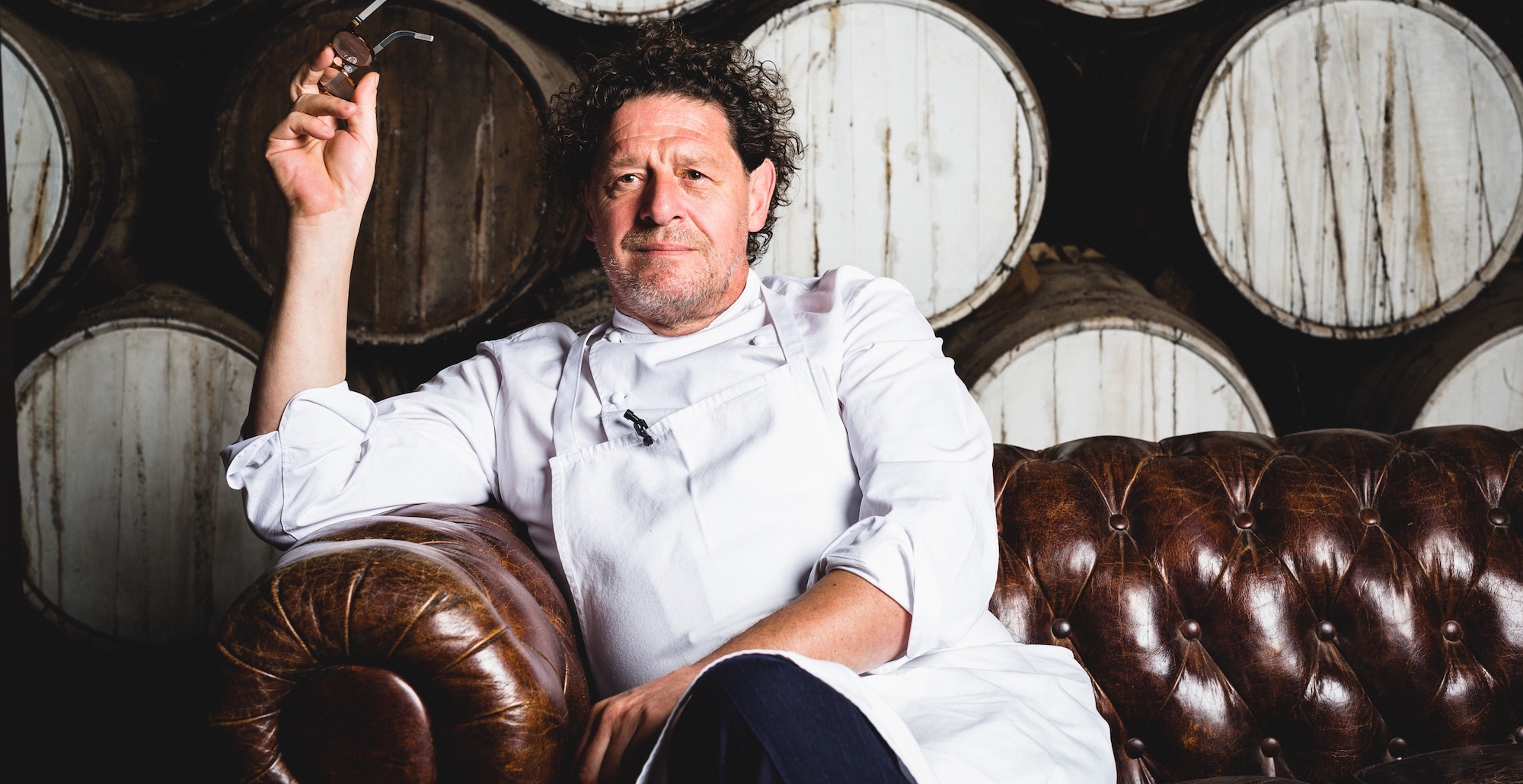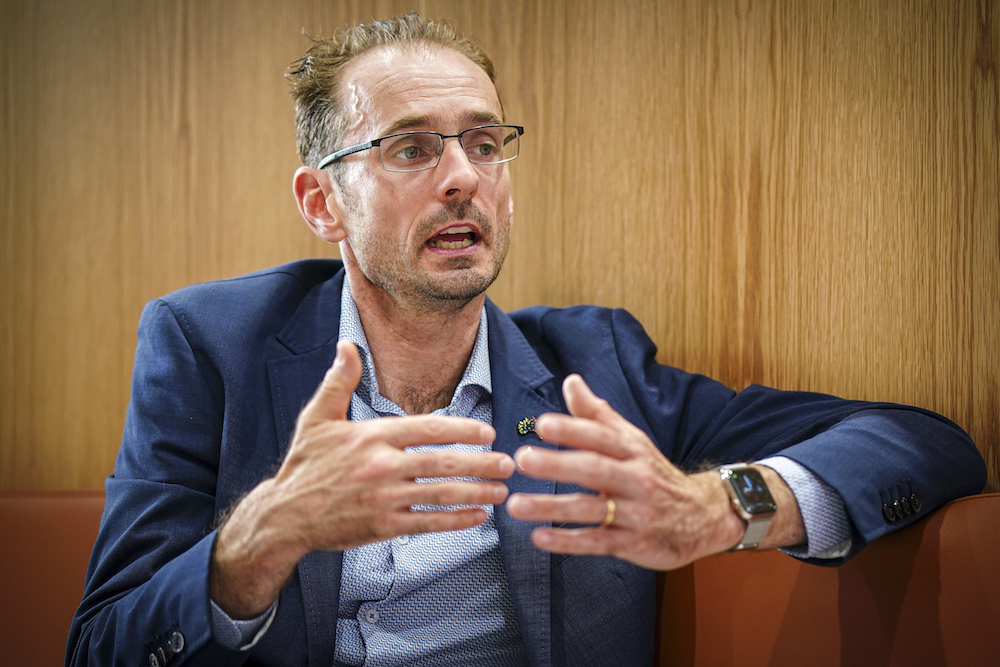Tasting Australia
TASTE OF SUCCESS
Tasting Australia comes to the table for Mad March, making South Australia’s festival season all the sweeter
The best of Australia’s food and wine will be centre table during Adelaide’s Mad March season for the first time, as Tasting Australia presented by RAA Travel 2020 lights up its new March 27-April 5 timeslot.
The nation’s longest-running celebration of food and wine is working to expand on its record audiences in 2019, introducing inaugural Tasting Australia Airlines charter flights from Brisbane to stunning locations in McLaren Vale, and a similar charter from Melbourne to the Vale to sample the region’s exciting fare in company with national and international cooking talents.
The tours from Brisbane allow guests to experience an Italian long lunch created by Michelin star alumni Marco Pierre White, alongside Africola’s Duncan Welgemoed and Gather at Coriole’s Tom Tilbury, with a tour of the fabled d’Arenberg Cube and the Salvador Dali exhibition.
New events include a farmgate lunch at Yalumba with celebrated chef and festival ambassador Matt Moran, who will join Tasting Australia creative director Simon Bryant on March 29. “This will be an event not to be missed; amazing food, wine and entertaining stories from the kitchen,” Bryant says.

The new One Plate series adds a chance to sit down to a world-class main meal and side dish in the Glasshouse Kitchen, prepared by Bryant, Kangaroo Island chef Jack Ingram (Sunset Food and Wine) and Clare Valley chef Guy Parkinson (Seed Kitchen). Other culinary idols are set to hit the Glasshouse Kitchen for one-off special events.
Moran, Dan Hong and Mark Best have all been named ambassadors for the 2020 festival and a team of six guest programmers – Morgan McGlone of Belles Hot Chicken in Sydney/Melbourne, Welgemoed, Karena Armstrong (Salopian Inn), Paul Baker (Botanic Gardens Restaurant), Adam Liston (Shobosho) and Emma McCaskill (Sparkke at the Whitmore) – have lined up their culinary idols for the more than 140 events during the 10-day festival.
British chef Sat Bains, of two-Michelin star Restaurant Sat Bains, and Heidi Bjerkan, of Norway’s one-Michelin star Credo, will add their distinctive flavours. Adelaide icon Cheong Liew will return as festival patron.
“It’s so important for the festival to be able to offer a range of experiences, celebrating the best quality of everything we do well in South Australia,” Bryant says.
WE HAVE
LIFT OFF
The Australian Space Agency has taken up its new offices at Lot Fourteen and is on the lookout for smart people and industries to help it lift off
Deputy head of the Australian Space Agency Anthony Murfett (above) is a man on the go, but he now has a permanent home to co-ordinate his activities after the ASA moved into new offices at Adelaide’s Lot Fourteen late last year.
Security issues surrounding the agency mean we can’t get a look at the new workspace but it will be one of the few places related to the ASA that is sequestered from the public. The ASA’s primary mission is to smooth the way for private companies to step up, triple the value of the space industry to $12 billion a year and create 20,000 jobs by 2030.
But a crucial part of achieving those goals will be taking Australians of all ages and walks of life along for the journey. A big part of that will be working with the National Science and Technology Centre, Questacon, to set up the Space Discovery Centre at Lot Fourteen to provide interactive STEM education and engagement for students. “(It’s) the inspire element. We want to engage with the community and the kids so they see space as a future opportunity,” Murfett says.
The Centre will also work in tandem with Australia’s Mission Control at Lot Fourteen, to provide a direct insight into the industry and inspiration for anyone willing to cross the threshold.
“Ultimately, the agency will want to use it to showcase what’s happening in space,” Murfett says. “The intention is to show the community what’s happening on the International Space Station and, as we go Moon to Mars, there is an ability to use this facility.

“We want to make it that you walk in and you go, ‘Yes, this is space, this is Australia’. We will also start working on how even those who don’t think they can participate in space – the manufacturers, the technicians who, for example, could be manufacturing O-rings or seals (for application) in space. It’s the broader story of how what we are doing on land, sea and air can now apply to space.”
Amid the work begun by Murfett and ASA head Dr Megan Clark, who will step down as planned in late June, are the next steps for Mission Control, where start-ups and small and medium-size enterprises can control, test and develop satellite technology. Design guidelines were released late last year and show how industry can apply for grant funding to establish the centre. Applications close in February. “Then we’ll assess the applications and we hope to announce around the middle of the year, and that will kick off the process for that successful organisation to get Mission Control up and running,” Murfett says.
Being a part of the US’s efforts to put the first woman and the next man on the Moon by 2024 and subsequent missions to Mars using the Moon as a base, will be a high-profile project for the agency and the Australian industries it hopes to inspire to take part.
“We have $150 million and that is actually about investing here in Australia for Australian businesses, researchers and their know-how to support NASA,” he says. “So our role is firstly, we want to open doors internationally ... that’s what we’ve done broadly with NASA.”
Agreements with other space agencies, including those from Germany, Italy and New Zealand, have also been won: “It allows us to talk to those countries and say Australia has skills in particular areas and we’ve got great businesses and researchers that can undertake that.
“The agencies are also going to be involved in Moon to Mars – it opens opportunities for us to collaborate in what is going to be a mission involving many countries going together.”
The ASA also has a letter of intent with the European Space Agency, and expats have already come back to Australia to work at the agency.
Other job opportunities are opening up at the agency’s Lot Fourteen base with feelers out for people with a range of skills, including the technical knowledge to be able to know their antenna from their aperture. Murfett says that expertise is necessary “because we ... need to understand the opportunities we are seeing are real opportunities and ones we can support and invest in to help grow”.
world of opportunity
GO FASTER IN SPACE RACE
It’s as small as your thumbnail but it opens up the world. Myriota’s tiny new satellite transceiver signifies a giant leap forward for Australia’s space industry. Invented by the SA space start-up and built by SA-based manufacturer Motherson Innovations, the communications module is blazing its way as one of Lot Fourteen’s first payloads.
It’s all about pairing stellar ideas with rocket-assisted know-how and fuelling them with investment and support. It’s about identifying key challenges and recognising some aren’t as key as they seem. It’s a brave new world and Myriota is keen to share its experiences to inspire others.
Myriota chief executive officer and co-founder Dr Alex Grant has one piece of start-up advice for others and himself: “Go faster”. “Myriota is in a very privileged position to benefit from advice and support from a wide range of stakeholders,” he says. “In particular, our board members, including former astronaut, shuttle commander and pilot Pamela Melroy, are making incredible contributions to our business and the wider Australian space industry.”
Myriota’s director of product Nicole Russo says the vital first step for any start-up is identifying what your idea is, what your product will be and where it fits in the space market. “Having a mentor is a significant part of that process,” Russo says. “You don’t even know where to start. Who do you hire first? So finding a mentor that can feed some of that information to you is critical.”
The idea is to bring enough people together within the 7ha shared space of Lot Fourteen to generate a critical mass. “You need to start networking with people around you and become part of a collaborative start-up environment. That’s what (industry incubator) Stone & Chalk is trying to build,” Russo says.
Stone & Chalk is a co-working space within Lot Fourteen. “There are tonnes of fantastic ideas out there but not every start-up makes it. It’s because perhaps the idea they have hasn’t been validated against a customer need,” she says. “And that’s a common thing for a start-up. You go in one direction and realise that doesn’t really work – then you pivot this way, pivot that way ... And that’s OK. Lots of start-ups do that.”
But too much pivoting can be expensive, demoralising and delaying. And that’s where tapping into a pool of collective knowledge can smooth the way. For Dr Grant, Myriota is his second start-up. And it was already gathering momentum as Lot Fourteen came into being. “Rather than engaging with Lot Fourteen in an incubator context, we moved Myriota here to scale up – and the opportunity to do so came at just the right time,” he says. “Since moving in, we have been joined by neighbours, such as the Australian Space Agency, the SmartSat CRC, and like-minded space companies, such as Inovor Technologies and Neumann Space.”
It keeps coming back to finding ways to defeat the gravity of challenges start-ups face. “There’s a mentorship-like offering of assistance, especially for companies like us where the product you’re building requires regulatory approval or licensing,” Russo says. “You’re going to need government interaction, and they can ease that process, they can support you and speak on your behalf.”
For Myriota, that challenge was radio-spectrum licencing. “Governments are in a position to make that easier and provide support, giving you contacts into other countries or regulatory bodies. It could be anything – the World Health Organisation. It could be NASA … all of those organisations can be hard to access unless you know the right people.”
Russo says one key takeaway from Myriota’s experience is how to frame your questions. While customers often know what they want, they don’t always know what they need. “If you ask the customer, ‘would you need this particular interface?’ They’re absolutely going to say ‘Yes’, because, at some point in their lives, they may need it.
“So what that means is you set out to build a product that’s very flexible, very generic, and has as many interfaces on it as possible.
“Then you realise, actually, that’s quite hard. It’s expensive to build, it’s complex to maintain and, in actual fact, when you get it out there and your customers use it, they use maybe just one or two of the interfaces.”
This shaped the second-generation of the Myriota communications module. “It was a lot less complicated. And it was more focused on what we knew the customers needed, the types of devices they wanted to integrate with, and so forth,” she say.
Dr Grant says his concerns around attracting high-quality people proved groundless: “There is no shortage of amazing and motivated people who are searching for opportunities to join world-leading Australian companies. It’s a special moment in time as the space industry grows, and I anticipate that we will see the industry deliver benefits to customers not just in Australia but around the world.”